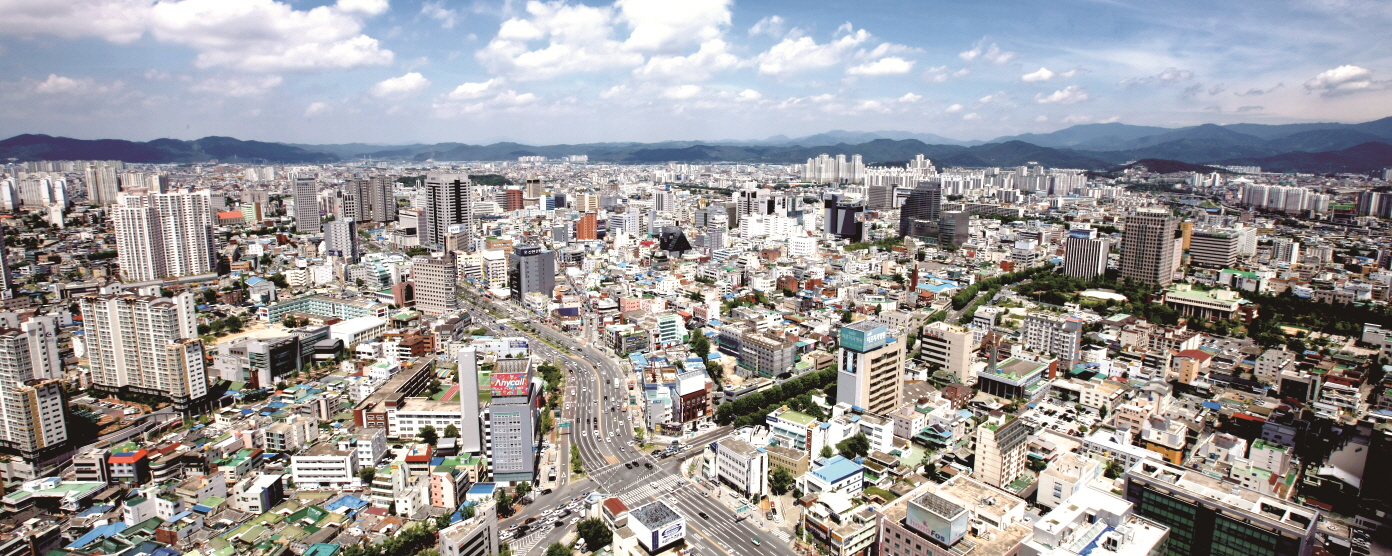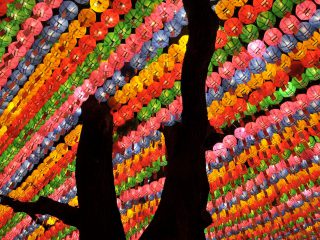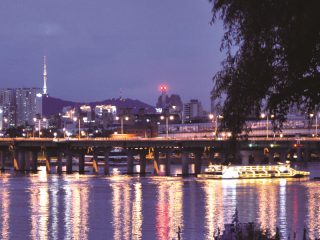[box_dark]
DAEGU | 대구
Metropolis brings together history, culture and nature
Written by Robert Koehler
Photographed by Ryu Seunghoo
Despite being Korea’s fourth largest city, Daegu gets something of a pass in a lot of tourist literature. This is a great shame, really. A bustling metropolis of 2.5 million people, Daegu is a fascinating motley of history, nature, and urban culture. Come in May, and you’re given the extra treat of seeing the Daegu Yangnyeongsi Herb Medicine Culture Festival, a tribute to the city’s proud history as one of Korea’s largest herbal medicine markets.
Layout
Like Seoul, Daegu is located in a basin, with the sacred peaks of Mt. Palgongsan to the north and Mt. Apsan and Mt. Biseulsan to the south. This, combined with Daegu’s southeasterly, inland location, has given the city a unique climate, with notoriously hot summers and cold winters. The spring and autumn are quite pleasant, however, and the dramatic climate is perfect for growing the region’s best-known product, apples.
Daegu has two subway lines: Line 1 runs northeast to northwest, while Line 2 runs east to west. The city’s main port of entry since the advent of the KTX has been Dongdaegu Station in the east of town. The express bus terminal is located nearby, too. Most of what you’ll want to see, however, is found in the old downtown area in the center of town, near Daegu Station. To reach it, you’ll need to take the subway from Dongdaegu Station.
SEE>
HISTORY WALKS
Daegu was one of only a handful of Korean cities and town that were not captured by the communists during the Korean War. Accordingly, the city’s historic architecture was largely spared from destruction. Granted, much was lost during post-war urban redevelopment, but many of the city’s old alleyways still remain and retain a nostalgic charm. To help guide visitors through the city’s history, Daegu has linked many of its historic sites together as walking tours—you can find maps at tourist information centers throughout the city. Western visitors will no doubt find the perfectly maintained missionary homes atop the hill in back of Jeil Presbyterian Church of interest—the California bungalows from the first decade of the 20th century now serve as museums. A small missionary graveyard is found nearby, too. Across from Jeil Presbyterian Church is Gyesan Catholic Cathedral, a spectacular French-built church completed in 1902. Much more Korean are the old homes of nationalist poet Yi Sang-hwa and nationalist activist Seo Sang-don, typical Korean-style homes of the 20th century.
83 TOWER & SKYJUMP
Daegu’s answer to Seoul’s N Seoul Tower, 83 Tower offers some of the best views in the city. It also used to provide one of the most exhilarating experiences in Korea, the so-called SkyJump, which was a sort of cross between BASE jumping and a zipwire. Unfortunately, the SkyJump was shut down last year, but you can still enjoy the tower’s restaurants, lounge, galleries and, of course, views.
APSAN PARK
If you want great views but with less of a death wish, hike up Mt. Apsan (660 m), where there’s an observation platform from which you can see the entire city. If you’re pressed for time or simply lazy, there’s a cable car that will take you to the top, too.
PALGONGSAN PROVINCIAL PARK
While technically not part of Daegu proper, the peaks of Palgongsan Provincial Park are nevertheless the city’s playground. Reaching a height of 1,192 m, Mt. Palgongsan is big, tall, and crisscrossed by hiking trails. Buddhists have held the peak in particular esteem, as evidenced by its many historic temples and Buddhist sculptures carved into the granite. The park is broken up into several districts—don’t expect to see them all in one day. The park’s most popular destination is Donghwasa Temple, a large monastery with an 18th-century main hall and a 17 m Buddhist statue erected in 1992 as a plea for national reunification. Another popular destination is Gatbawi, a 9th-century Buddhist statue atop a granite ridge. Come here on New Year’s morning or the morning of the university entrance exam and you’ll find half of Daegu praying in front of the statue. Another beautiful temple on the slopes of Mt. Palgongsan is Eunhaesa. The temple has two lovely hermitages, Baekheungam and Geojoam. The latter is one of only a handful of surviving wood buildings from the Goryeo Dynasty (935–1392). Geojoam is a bit of a pain to get to—you need to take Bus 251 from the nearby county of Yeoncheon, get off at Sinwon-ri, and walk 200 m from there, but it’s well worth it. For another off-the-tourist track destination, check out the Gunwi Buddhist Triad Grotto, a.k.a. the Second Seokguram Grotto, on the north side of Palgongsan Provincial Park. To visit, take a bus to Gunwi from Daegu’s Bukbu Bus Terminal, and from Gunwi take a bus to Mt. Palgongsan.
EAT>
One of Daegu’s most popular dishes is jjimgalbi—steamed beef ribs cooked in a red pepper sauce and garlic in a nickel bowl. It’s absolutely delightful, but spicy enough to burn you a new bodily orifice. You can find a whole alley of places serving it in Dongin-dong. Daegu is also famous for its its makchang and gopchang— basically, cow or pig intestines, served diced and grilled. Tasty, chewy, and wonderful with a shot of soju. Check out the Bukhyeon Makchang Golmok (ask your cabbie) to try it out.
NIGHT LIFE>
The bars of Samdeok-dong’s Rodeo Street are popular with Daegu’s younger crowd. You’ll find a lot of bars and clubs around Deuran-gil, a popular district of eateries and bars near Suseong Resort.
STAY>
Daegu is a big city with a wide range of accommodations. If you’d prefer something quieter, there are plenty of accommodation options in Palgongsan Provincial Park, too.
GO>
KTX trains to Dongdaegu Station depart from Seoul Station (travel time: 2 hours)
YANGNYEONG MARKET & DAEGU YANGNYEONGSI HERB MEDICINE CULTURE FESTIVAL (MAY 8–12)
Daegu’s best-known historic spot is Yangnyeong Market, one of Korea’s largest herbal medicine markets. During the Joseon Dynasty, this was a major herbal medicine trading post where you could find medications from Japan, China, Russia, and further afield. Today, you can find 50 herbal medicine stores, 25 clinics, 85 herbal doctors, and 20 ginseng stores. The market is also home to the Daegu Yangnyeongsi Oriental Medicine Culture Center as well as the Petite Joong-Ang
Family Museum, a private museum run by a third-generation herbalist family. The best time to visit the market is during the Daegu Yangnyeongsi Herb Medicine Culture Festival, when the market hosts cultural performances, checkups by herbal doctors, hands-on programs, and more.
FYI> www.herbfestival.org
(329-5 Sincheon dong, Dong gu, Daegu ㅣ대구광역시 동구 신천동 329-5)











